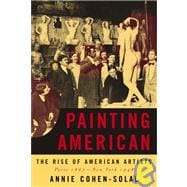
Note: Supplemental materials are not guaranteed with Rental or Used book purchases.
Purchase Benefits
What is included with this book?
| Ouverture Paris, 1867: Bumpkins in a Ballroom | 3 | (13) | |||
| Part I The Argonauts and the Golden Fleece 1855-1900 | |||||
|
13 | (11) | |||
|
24 | (8) | |||
|
32 | (7) | |||
|
39 | (7) | |||
|
46 | (8) | |||
|
54 | (6) | |||
|
60 | (8) | |||
|
68 | (9) | |||
|
77 | (9) | |||
|
86 | (11) | |||
|
97 | (8) | |||
|
105 | (10) | |||
| Part II The Return of the Prodigal Sons 1870-1913 | |||||
|
115 | (8) | |||
|
123 | (8) | |||
|
131 | (9) | |||
|
140 | (8) | |||
|
148 | (9) | |||
|
157 | (5) | |||
|
162 | (6) | |||
|
168 | (6) | |||
|
174 | (8) | |||
|
182 | (9) | |||
|
191 | (13) | |||
|
204 | (11) | |||
| Part III From Notre Dame de Paris to the Brooklyn Bridge 1913-1948 | |||||
|
215 | (10) | |||
|
225 | (9) | |||
|
234 | (13) | |||
|
247 | (12) | |||
|
259 | (10) | |||
|
269 | (10) | |||
|
279 | (13) | |||
|
292 | (10) | |||
|
302 | (12) | |||
|
314 | (31) | |||
|
329 | (12) | |||
|
341 | (4) | |||
| Acknowledgments | 345 | (4) | |||
| Notes | 349 | (46) | |||
| Bibliography | 395 | (22) | |||
| Archives Consulted | 417 | (2) | |||
| Index | 419 |
The New copy of this book will include any supplemental materials advertised. Please check the title of the book to determine if it should include any access cards, study guides, lab manuals, CDs, etc.
The Used, Rental and eBook copies of this book are not guaranteed to include any supplemental materials. Typically, only the book itself is included. This is true even if the title states it includes any access cards, study guides, lab manuals, CDs, etc.
Excerpted from Painting American: The Rise of American Artists, Paris 1867-New York 1948 by Annie Cohen-Solal
All rights reserved by the original copyright owners. Excerpts are provided for display purposes only and may not be reproduced, reprinted or distributed without the written permission of the publisher.